Introduction
Many dog owners have heard the term “pack mentality” and wondered if it truly applies to their furry companions. After all, domestic dogs evolved from wolves, creatures known for their strong social structures and strict hierarchies. But how much of that wolf-like thinking remains in modern dogs?
Understanding pack mentality can shed light on why dogs behave the way they do in multi-dog households, how they interact with humans, and why some training methods emphasize leadership and structure. While dogs no longer live in the wild like their ancestors, traces of their wolf heritage still influence social behavior, communication, and instincts.
In this post, we’ll explore the roots of pack mentality, compare wolf and dog behavior, debunk common myths, and show how this knowledge can help owners foster better relationships with their pets.
Understanding Wolf Pack Behavior
To understand the roots of pack mentality in dogs, it’s helpful to first look at how wolves operate in the wild. Wolves are highly social animals that rely on cooperation, communication, and structure to survive.
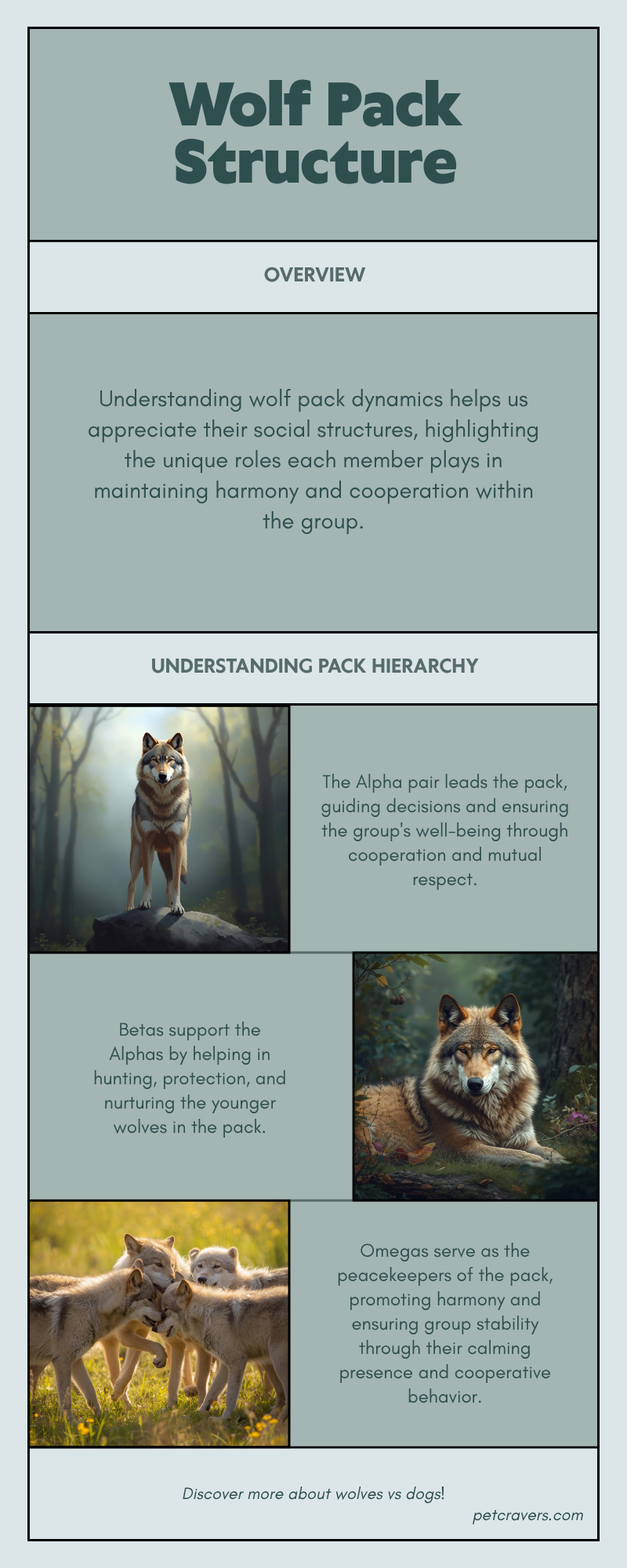
Hierarchy and Roles
A typical wolf pack consists of an alpha pair (the dominant breeding pair), subordinate wolves (often called betas), and lower-ranking members known as omegas. Each wolf has a role that contributes to the overall functioning of the pack, from hunting to caring for pups and defending territory.
Social Behavior and Cooperation
Wolves hunt in coordinated groups, share food, and communicate constantly through body language, vocalizations, and scent marking. These behaviors ensure the pack functions smoothly and that survival is maximized.
Territory and Leadership
Alpha wolves lead the pack, but their leadership is based on experience, cooperation, and the respect of other members rather than sheer aggression. Effective leaders maintain order while fostering group cohesion.
Understanding these dynamics in wolves helps explain why certain social instincts persist in domestic dogs, even if they manifest differently due to domestication and human interaction.
Domestic Dogs vs. Wolves: Evolutionary Perspective
Domestic dogs are descendants of wolves, but thousands of years of evolution and domestication have significantly altered their behavior. While some wolf instincts remain, dogs have adapted to life alongside humans in ways that make their social structure more flexible and cooperative.
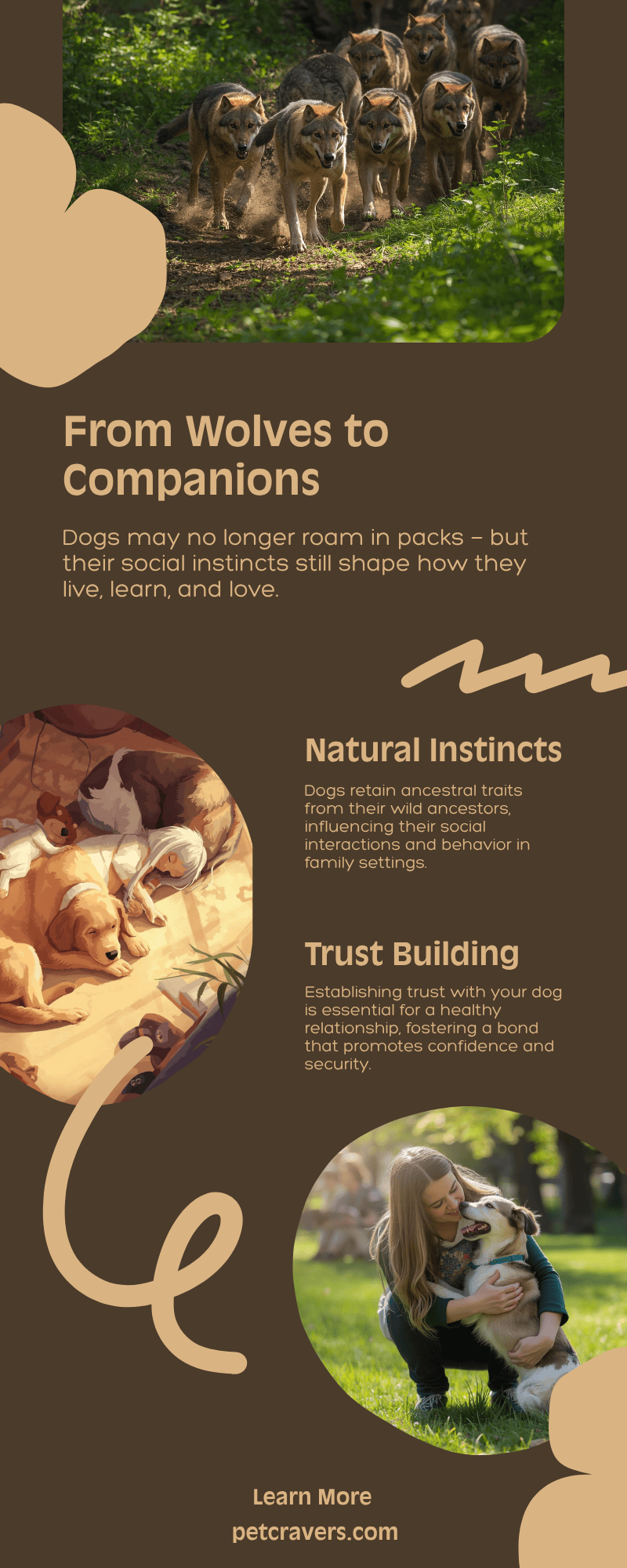
Behavioral Changes Through Domestication
- Reduced Aggression: Unlike wolves, domestic dogs rarely need to fight for survival or territory, resulting in less aggressive tendencies.
- Increased Social Flexibility: Dogs can bond not only with other dogs but also with humans, forming strong interspecies social groups.
- Dependence on Humans: Dogs rely on humans for food, protection, and guidance, which has reshaped their natural instincts.
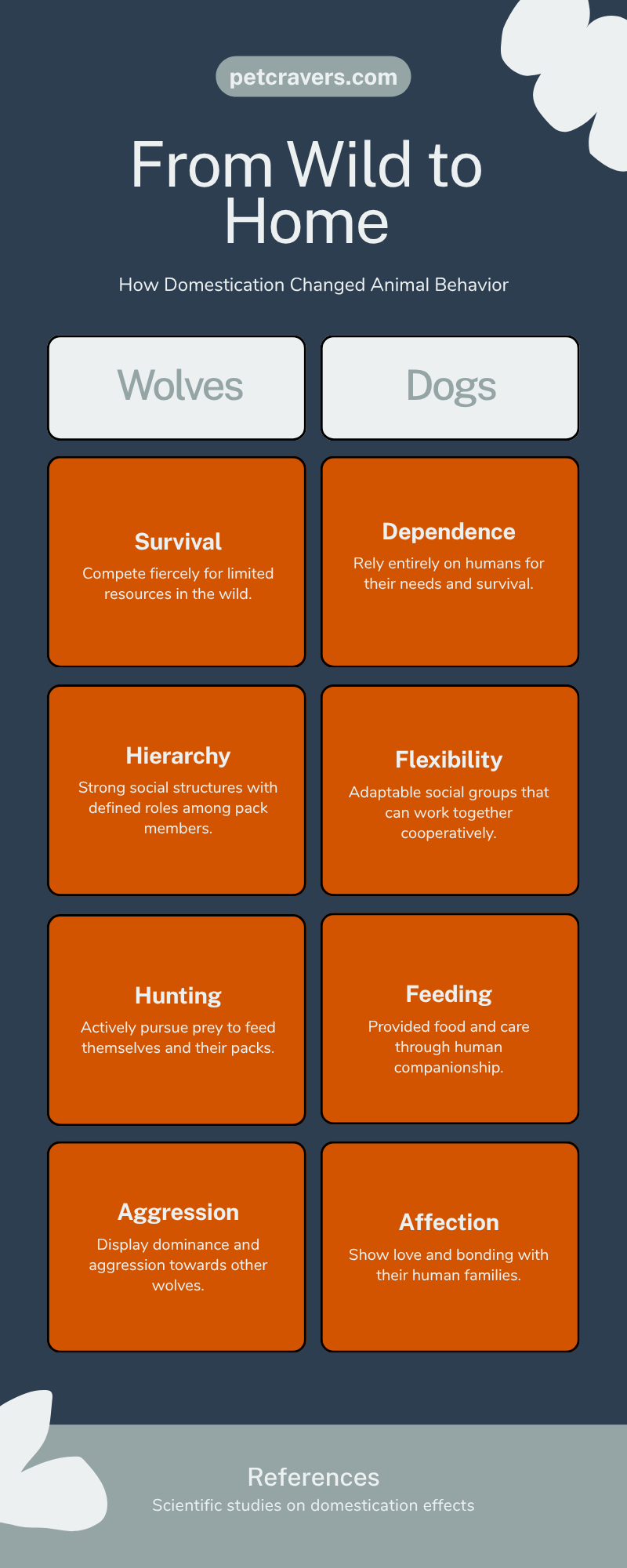
Retained Instincts
Despite domestication, dogs retain some pack-related behaviors:
- Recognition of social hierarchy within multi-dog households.
- Cooperative play and communication with both dogs and humans.
- Loyalty, protection instincts, and group coordination in family settings.
By understanding which wolf traits persist and which have been modified, owners can better interpret their dog’s behavior and use training methods that respect their natural instincts while promoting harmony in human-dog households.
Pack Mentality in Domestic Dogs
Although domestic dogs no longer live in wild packs, many still display social behaviors reminiscent of their wolf ancestors. Understanding these instincts can help owners interpret interactions within multi-dog households and between dogs and humans.
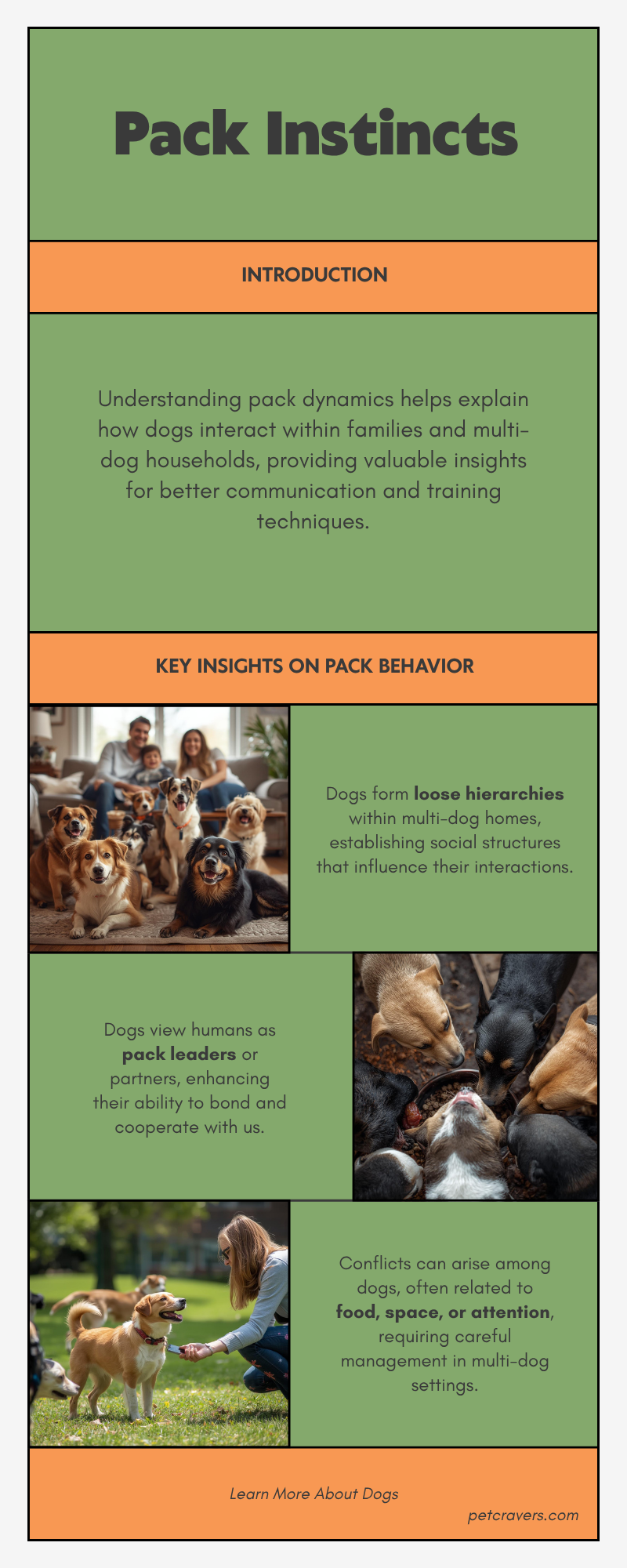
Social Hierarchy
Dogs often establish a loose hierarchy within a group, determining which dog leads during play, eating, or resting. While this is less rigid than wolf packs, it can influence behavior, resource sharing, and conflict resolution.
Dogs and Humans as Pack Members
Many dogs perceive their human family as part of their “pack.” They look to their owners for guidance, protection, and social cues. This is why consistent leadership, clear communication, and positive reinforcement are key to harmonious dog-human relationships.
Cooperation and Conflict
- Cooperation: Dogs often cooperate with other dogs and humans during play, training, or tasks that require teamwork.
- Conflict: Disputes may arise over food, toys, or attention, but understanding natural pack instincts can help owners manage and resolve these conflicts effectively.
Recognizing the influence of pack mentality allows owners to foster a structured yet supportive environment, ensuring that social instincts benefit rather than disrupt household harmony.
Debunking Myths About the “Alpha Dog”
The concept of the “alpha dog” has long influenced dog training, but modern research shows that strict dominance-based models are often misleading.
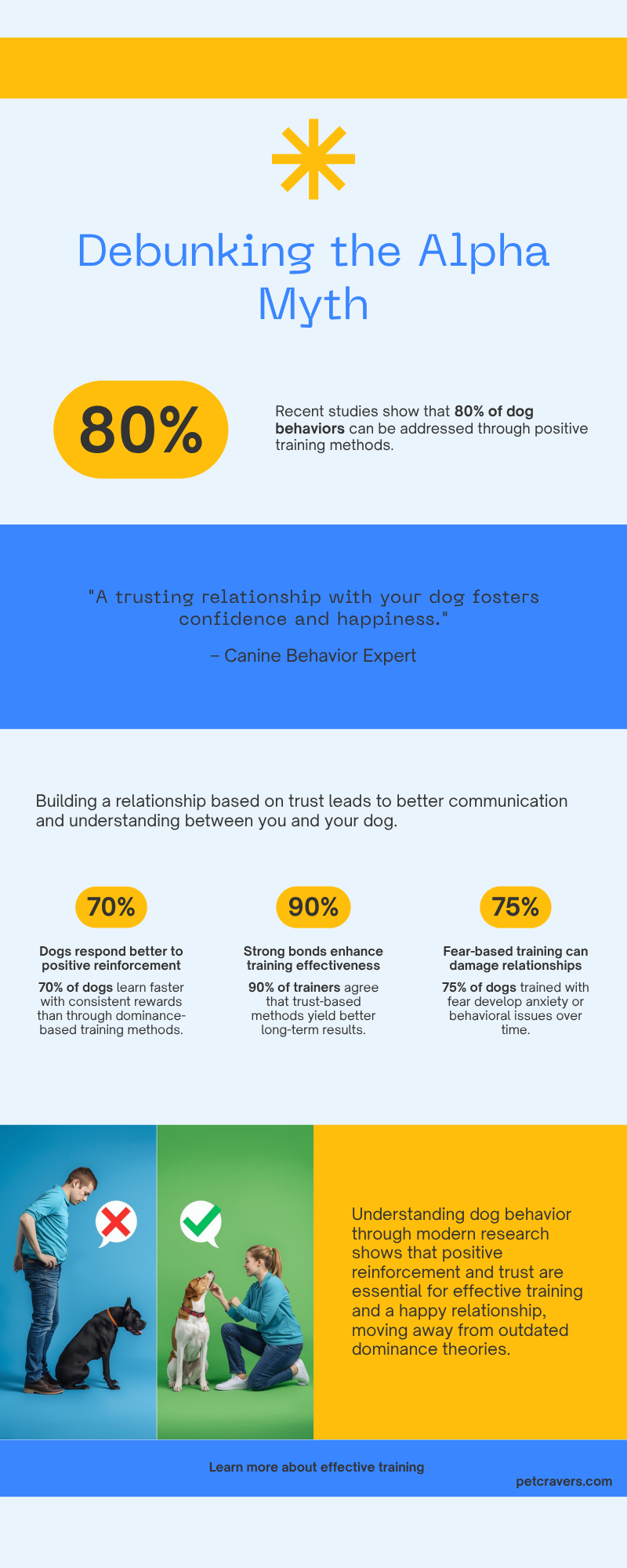
Origin of the Alpha Theory
The alpha theory originated from early studies of captive wolf packs, where unrelated wolves competed for dominance. Trainers later applied this concept to domestic dogs, believing that owners needed to assert themselves as the “alpha” to maintain control.
Modern Research
- Domestic dogs are more socially flexible than wolves.
- Leadership in dog-human relationships is better achieved through guidance, trust, and positive reinforcement rather than aggression or intimidation.
- Cooperation and communication are more effective than dominance-based strategies.
Key Takeaway
Instead of striving to be an “alpha,” dog owners should focus on:
- Clear communication
- Consistent routines
- Positive reinforcement
- Mutual respect
By moving away from outdated dominance myths, owners can foster healthier relationships with their dogs and encourage natural, cooperative behavior.
How Pack Mentality Affects Dog Training and Behavior
Understanding a dog’s pack instincts can significantly improve training and daily interactions. By recognizing how dogs perceive social structure, owners can encourage cooperation and minimize stress.

Training Strategies Based on Pack Instincts
- Guidance Over Force: Dogs respond best to leadership that is consistent and encouraging rather than aggressive.
- Clear Roles: Establishing routines and boundaries helps dogs understand expectations within the household “pack.”
- Positive Reinforcement: Rewarding desirable behaviors strengthens cooperation and trust.
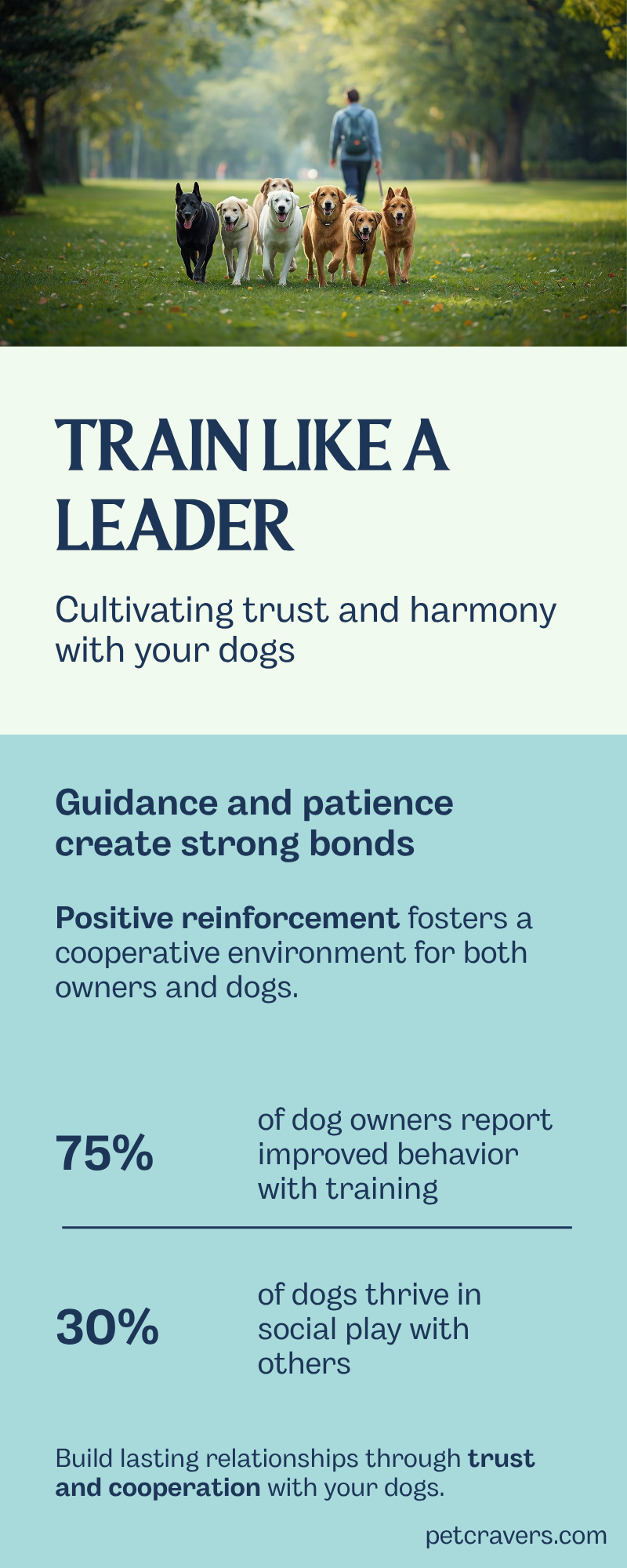
Social Behavior in Multi-Dog Households
- Dogs may naturally form hierarchies, with some assuming leadership roles and others following.
- Conflicts can occur over resources, space, or attention, but understanding pack dynamics allows owners to intervene constructively.
- Encouraging cooperative play and shared activities helps maintain harmony.
By leveraging pack mentality, owners can create training programs and household environments that respect a dog’s instincts while promoting obedience, socialization, and bonding.
Factors That Influence Pack-Like Behavior in Dogs
Not all dogs display pack-like behavior in the same way. Several factors influence how a dog perceives social structure and interacts with others.
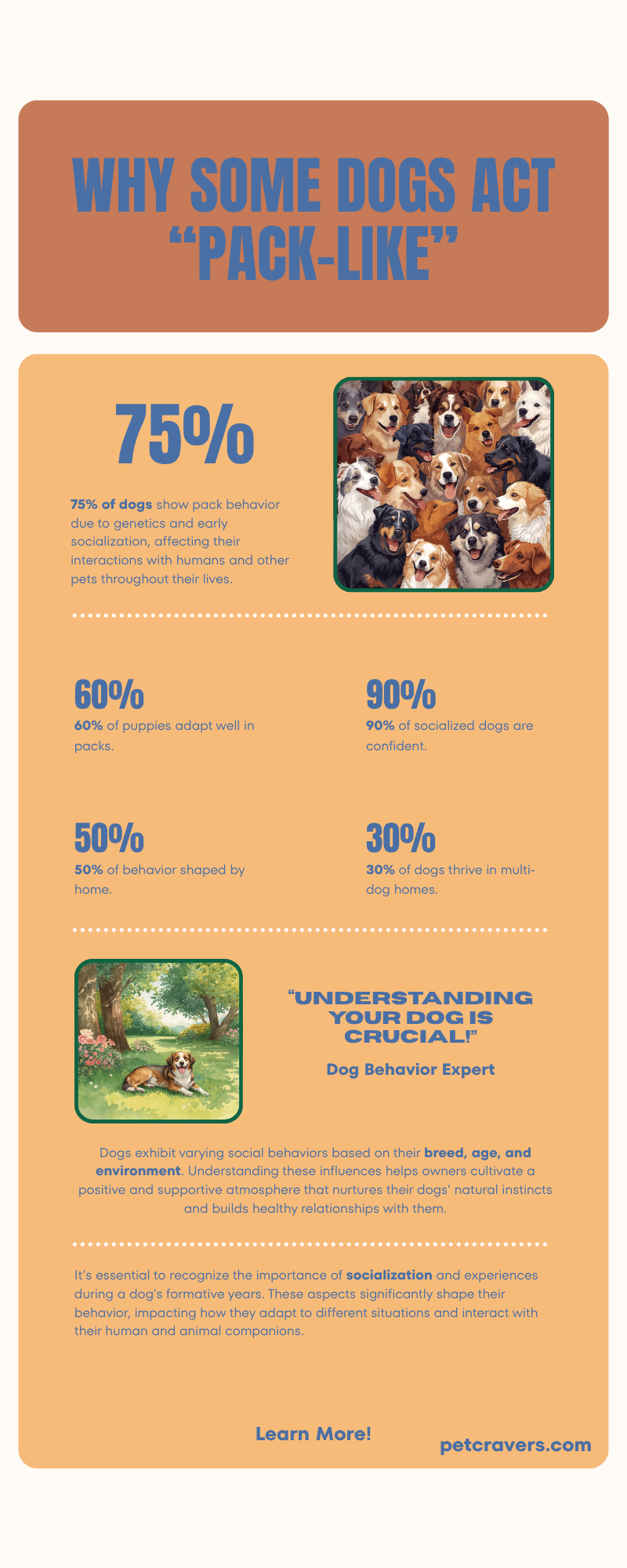
1. Breed Differences
- Social Breeds: Dogs like Labradors or Golden Retrievers often exhibit cooperative and pack-oriented behavior.
- Independent Breeds: Some breeds, like Afghan Hounds or Basenjis, may be more solitary or less influenced by hierarchy.
2. Age and Experience
- Puppies learn social cues and boundaries from littermates, which shapes their pack behavior.
- Older dogs with established habits may behave differently within multi-dog households.
3. Socialization
- Dogs exposed to other dogs and humans from an early age are better at interpreting pack signals and cooperating.
- Poor socialization can lead to anxiety, aggression, or misunderstandings in group settings.
4. Environment and Household Dynamics
- Multi-dog households create natural opportunities for hierarchy formation and cooperation.
- Single-dog homes rely on humans as the primary “pack,” making clear communication and routines essential.
Understanding these factors helps owners predict behavior, prevent conflicts, and create environments that align with their dog’s natural instincts.
Practical Tips for Owners
Understanding pack mentality can help owners manage their dogs more effectively, whether in single-dog or multi-dog households.

1. Establish Clear Routines
Dogs thrive on consistency. Regular feeding times, walks, and play sessions create structure that mimics pack predictability.
2. Use Positive Reinforcement
Encourage good behavior through treats, praise, or play. Positive reinforcement strengthens cooperation and builds trust.
3. Encourage Cooperative Play
- In multi-dog households, provide games and activities that promote teamwork rather than competition.
- Rotate attention and resources to reduce jealousy or conflicts.
4. Avoid Dominance-Based Training
Rather than asserting yourself as an “alpha,” guide your dog with patience, clear communication, and consistency.
5. Socialize Your Dog
Early and ongoing socialization with other dogs and humans helps your dog interpret social cues correctly and reduces conflicts.
By applying these strategies, owners can foster harmony, encourage natural cooperative behavior, and strengthen the bond between humans and dogs.
Conclusion
While domestic dogs no longer live in wild packs, many still retain social instincts inherited from their wolf ancestors. Pack mentality influences how dogs interact with other dogs, humans, and their environment, shaping behavior, cooperation, and even conflicts.
Modern research shows that strict dominance hierarchies, like the “alpha dog” concept, are largely myths when applied to domestic dogs. Instead, dogs thrive in environments that emphasize guidance, communication, and positive reinforcement. By understanding pack instincts, owners can better manage multi-dog households, train effectively, and nurture strong bonds with their pets.
Recognizing the balance between inherited wolf behaviors and domesticated adaptations allows us to respect a dog’s natural instincts while fostering harmonious, cooperative, and happy relationships.
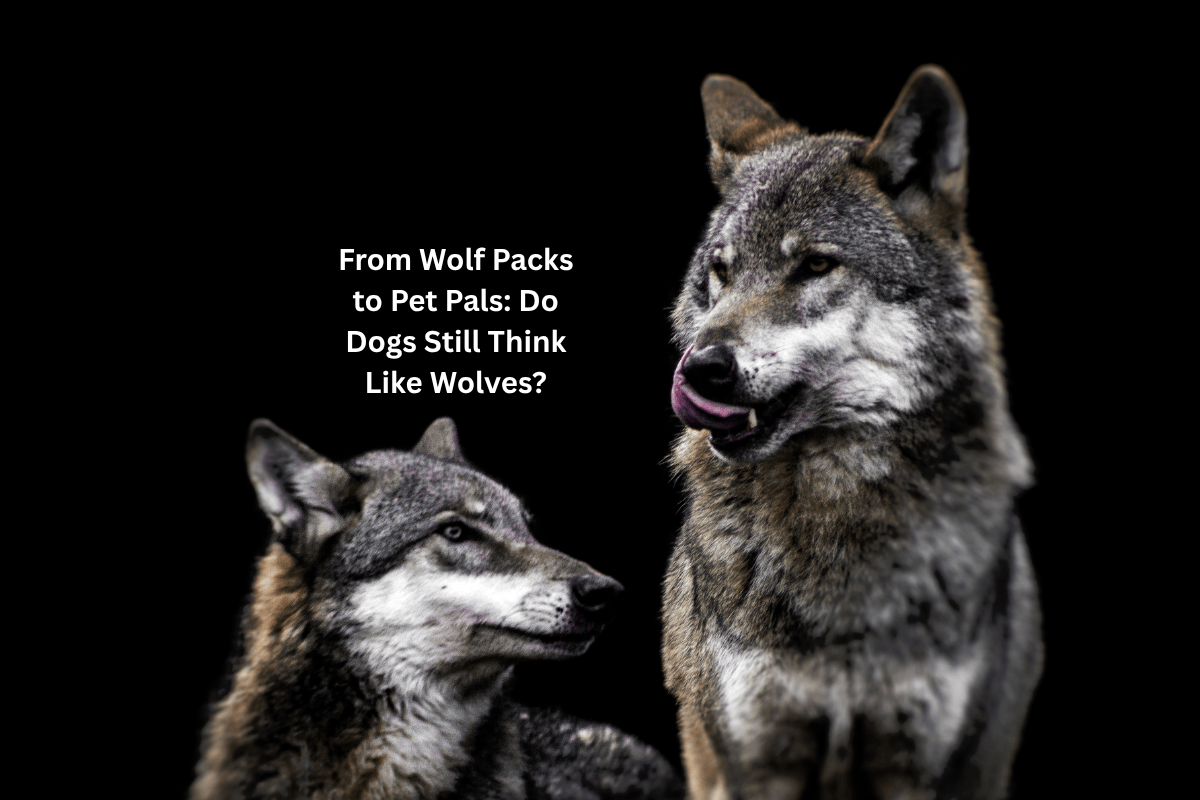

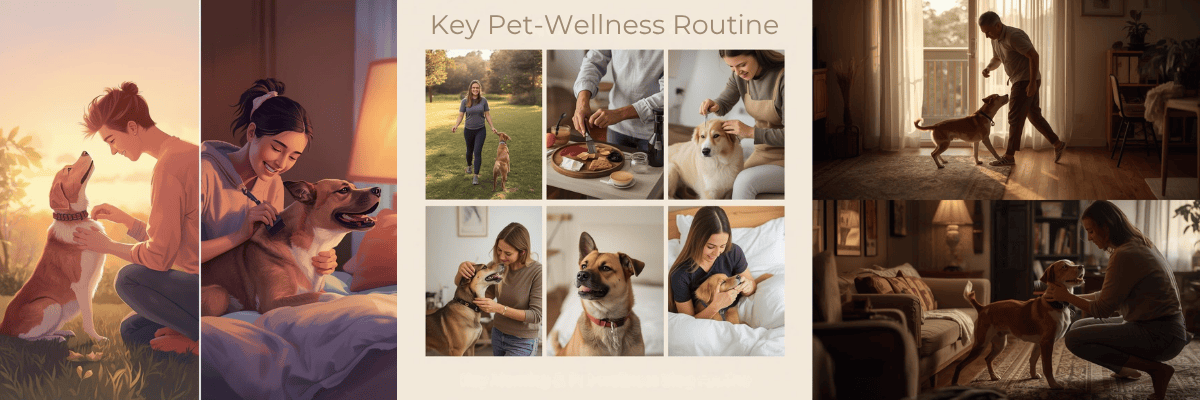

Leave a Reply